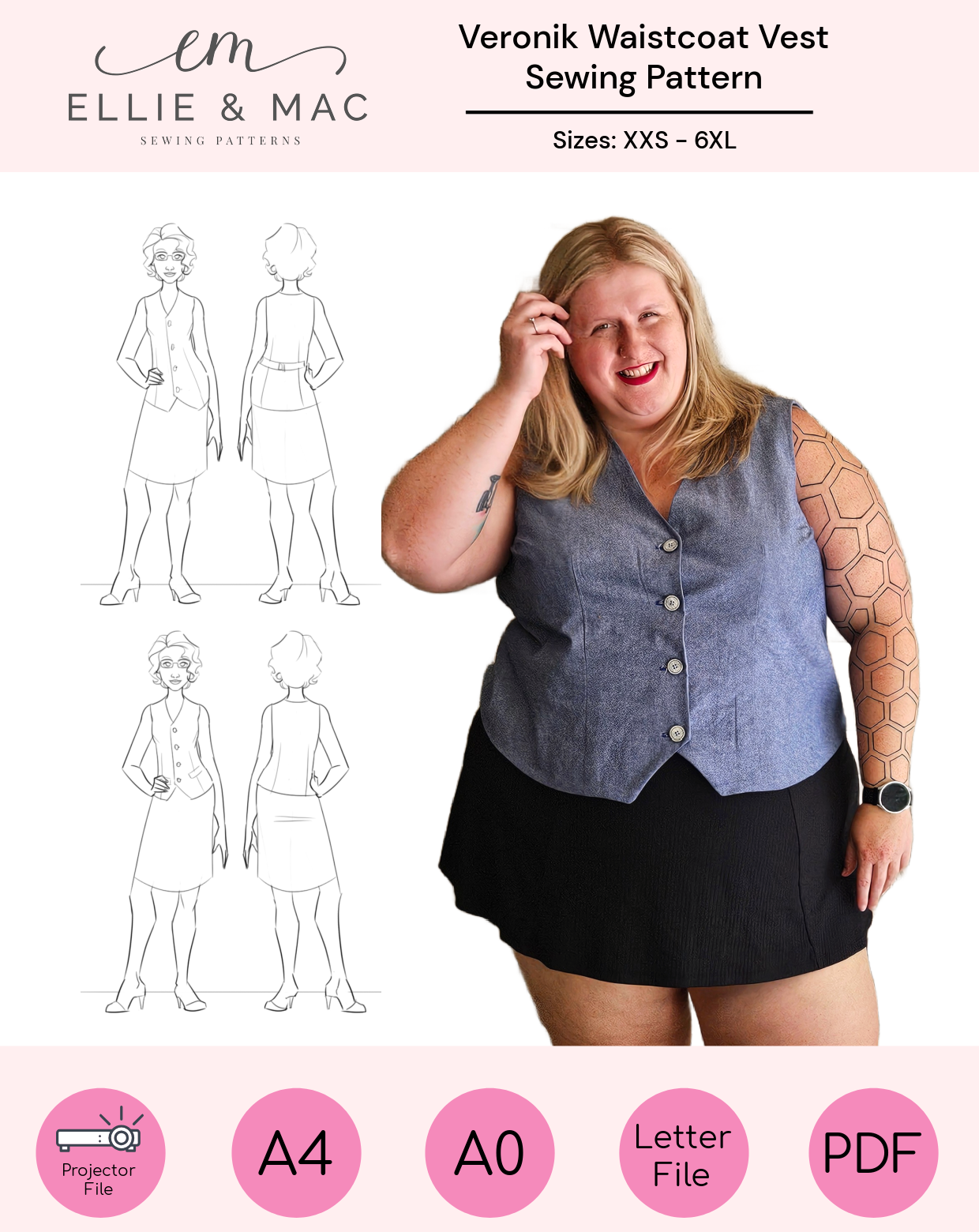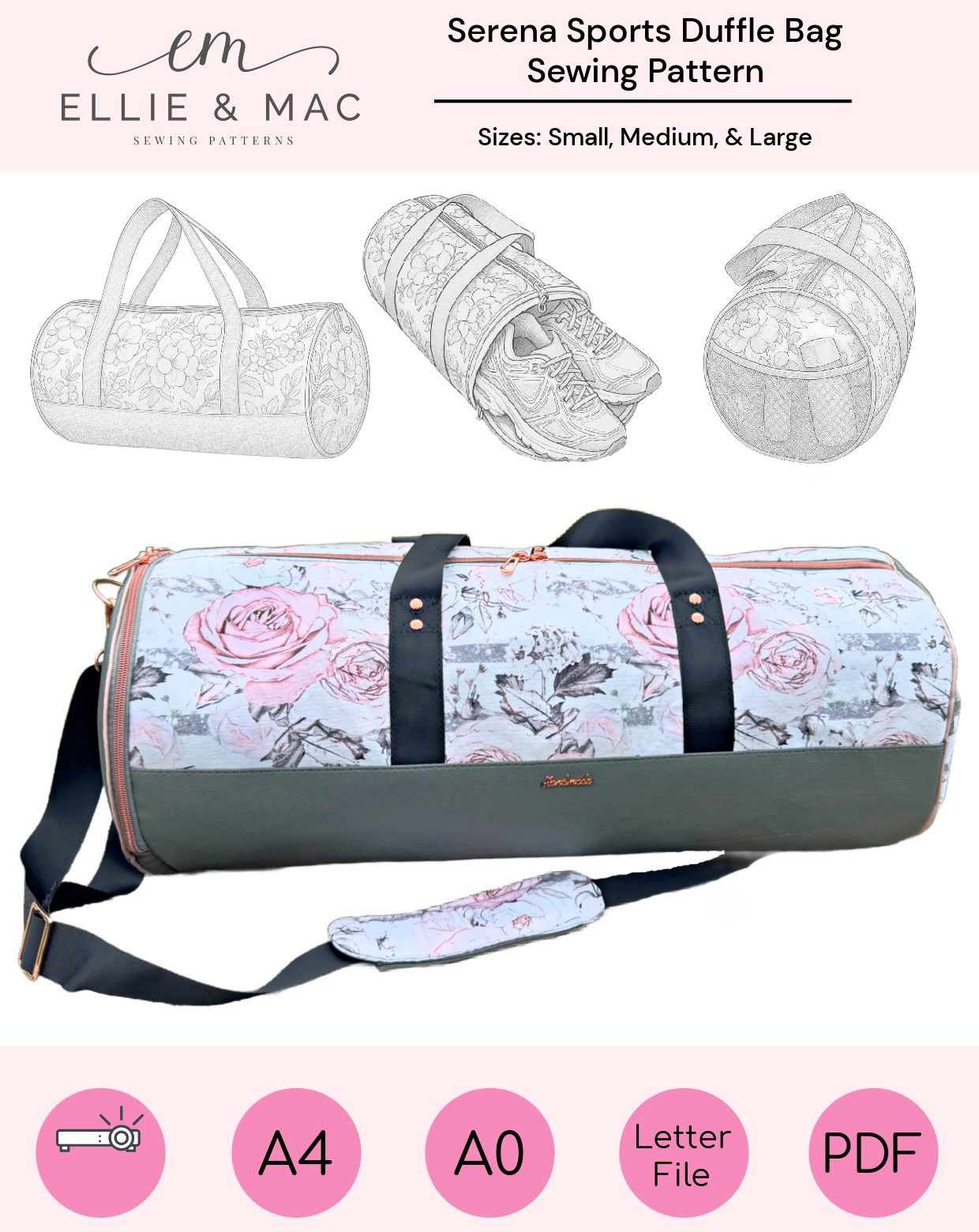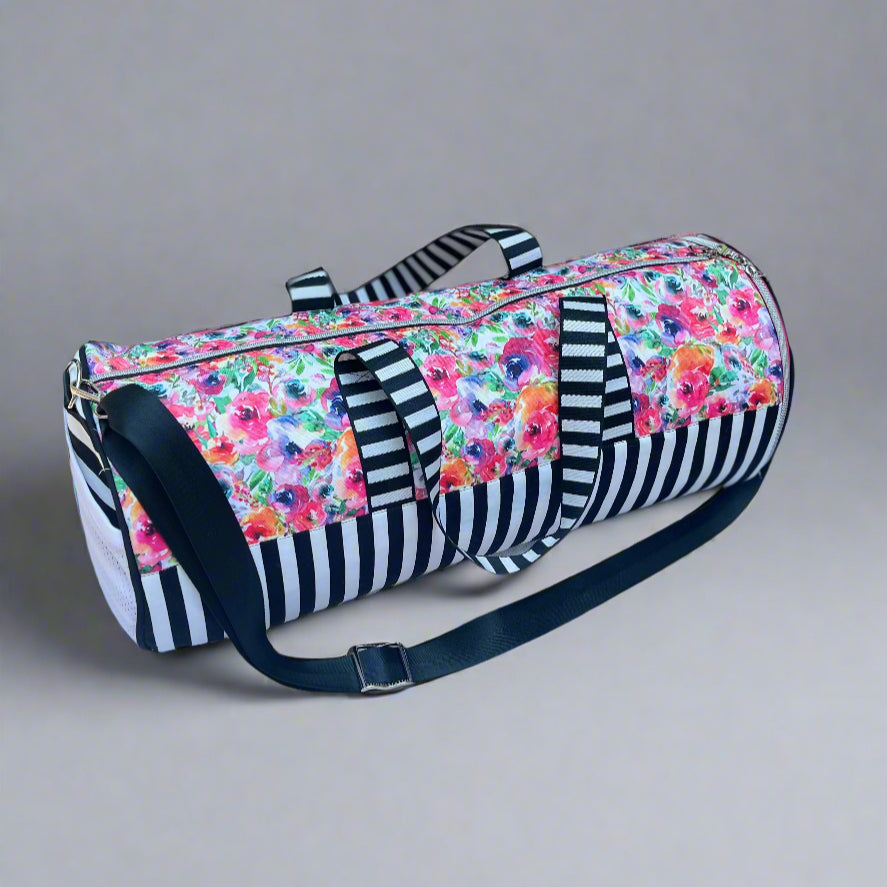Fixing the Timing on a Serger
Model: Brother 1034D
There is nothing more frustrating than trying to finish a project and realizing that your serger is no longer producing perfect stitches. You go through the checklist and make sure that you have fresh needles that are correctly installed, that the threading has been done in the proper order and that the thread is firmly sitting between the tension disks. The needle plate appears to be intact without any bent or broken needles. And yet, you are still having problems: your left needle isn’t catching, it’s skipping stitches, not chaining or you hear a clunking noise.
If you are using a vintage machine and/or the cost of fixing it will exceed the cost of buying a new one then a DIY fix may be worth the time and effort!
** If your machine is under warranty it is advisable to have it
serviced by an approved technician. **
In this tutorial I will explain how to fix the timing on a Brother 1034D serger.
What you will need:
-
Small lint brush
-
Philip’s head screw driver
-
Flat head screw driver
-
Hex Wrenches - #2, #3
-
Regular Wrench - 8 mm
-
90/14 needle
-
Digital Caliper
-
Ruler (mm)
-
Gauge Set
-
Sewing Machine Oil
-
User Manual - Model 1034D
-
Service Manual - Model 1034D
Safety Tip:
Unplug your machine from its electrical source while cleaning, oiling and fixing the timing.
STEP 1: CLEAN YOUR MACHINE
Your first step will be to open the machine and give it a proper clean. Document the order in which you take everything apart so that you will remember how to put it back together.
Use a small brush to remove the lint from all crevices. Your machine should have come with a brush, but a clean paintbrush would work. You can also use a vacuum with a small attachment.
Lindsey Essery, the owner and head designer of Ellie and Mac Patterns, has an excellent video tutorial on how she cleans her Baby Lock Serger.
STEP 2: OIL YOUR MACHINE
My manual states: “For smooth and silent operation, the moving parts of the machine should be oiled periodically”. It suggests oiling the machine once to twice a month for normal use. If used more often, oil it once a week.
Add a drop of sewing machine oil to any spot where metal touches metal. The Brother 1034D manual has a diagram of two key, easy to access, oiling points (see image below). However, if you already have your machine taken apart you will want to oil the needle bar, and the gears behind the front cover.
STEP 3: RETHREAD MACHINE
Now that your machine is free of fluff, freshly oiled and with new needles, try and rethread the machine. If your machine chains properly - you can stop right here!
If you continue to have issues, you will likely have to adjust the position and correct the timing of the needles and/or loopers.
In all likelihood you will find yourself rethreading your serger multiple times throughout the process as you cautiously (while optimistically!) verify whether the modifications you made were successful.
STEP 4: Refer to the Service Manual
There are quite a few YouTube Tutorials on how to fix the Brother 1034D serger (e.g., Serger Timing Fix in 3 Steps, Step by Step Tutorial on How to Fix your Serger, How to fix a seized Brother 1034D serger overlocker and check Timing). Each one helped me become better acquainted with how the internal mechanism of my machine works, but I was still struggling with making the necessary repairs. Unfortunately there is rarely a quick fix in resolving timing issues.
The service manual provides all the technical details and measurements needed to repair your serger. I strongly recommend that you read through the entire manual before you begin to adjust the timing.
Gauges
The manual recommends using gauges of various widths to determine small clearances - 2.2 mm, 2.4 mm, 5.8 mm and 11.6 mm. I searched the Internet for PART CODE: X77402001 and was unable to find it. Not one to be discouraged, I asked my teen if he could 3D print a set. He was more than happy to custom design it for me.
Alternatively, I have seen inexpensive metal gauge sets being recommended for use. I believe they work by stacking one on top of the other until you reach your desired measurement. They are readily available at most hardware stores.
Height of Needle Bar
When the needle is raised to its highest position there should be 11.3 - 11.9 mm of space between the tip of the left needle and the surface of the needle plate.
Remove the presser foot before you slip the gauge under the needle. You can also use a ruler or digital caliper, though I found it much more accurate with the gauge.
If the needle bar height is off you will need to manually adjust it. Right next to the lightbulb, at the top of the needle bar, you will find a screw. Use a #3 hex wrench to loosen it. There is no need to remove the whole piece - just enough for the bar to shift vertically. It can also rotate horizontally so take care that when you tighten it into position the needles remain parallel to the needle plate. I used the thread bar as a visual guide.
Upper Looper Timing
When the needle is in the highest position the upper looper should be exactly in between the needles.
You may have to turn the handwheel back and forth a few times until you are able to determine when the needles are at their apex.
When the left needle is in its extreme left position there should be 5.6 - 6.0 mm clearance between the pointed end of the looper to the left side of the needle.
For better access you can remove the presser foot bar at the left. There’s a single screw on the bar that can be removed with a flat screwdriver. I’ve photographed this after putting it partly together so it’s a bit of a tight squeeze!
To access the upper looper lever fixing screws the front cover will need to be removed. Use a #2 hex wrench to loosen BOTH screws. Once it is moveable you can set the looper in position as detailed above.
Finally, check that there is about 1 mm clearance between the needle and upper looper. Use a #14 needle as your gauge.
To adjust the horizontal axle of the upper looper you loosen the setscrew at the top of the upper looper shaft.
Lower Looper Position
Contrary to the YouTube tutorials, I was not successful when using the “magic 18.5 mm measurement”. Every time I tried putting it in the recommended position my needles hit the lower looper.
Through many trials I found that when the hole of the upper looper was exactly between the two needles, there was a 20.58 mm clearance between the removable needle finger and the tip of the lower looper.
I do wonder if the discrepancy has to do with the height of the needles. Although there is a very narrow range where the needle can be - each fraction of a millimeter will affect the precise location of the upper looper and thus the lower looper. They must all be in exact coordination.
Going back to the manual, it’s important to ensure that the lower looper is in the correct position before attempting to fix the timing. It warns that “too much adjustment will cause damage to other parts or cause the needle to skip stitches”.
The lower looper is adjusted by loosening the hexagonal screw at the base of the lower looper. To do that you will need a regular wrench with an 8 mm bit.
When the lower looper is at its highest position, there should be 2.0 - 2.4 mm of clearance between the upper surface of the needle plate to the tip of the lower looper. The distance between the point of the lower looper and centre of left-hand needle will be 12.5 mm.
Timing of the Lower Looper
When the needles are raised 2.2 - 2.6 mm above its lowest position, and the point of the lower looper is contacting with the right side of the needle:
-
The point of the lower looper should be between 0 - 0.05 mm from the right side of the left needle.
-
The distance between the lower lopper and the movable needle guard should be 1.2 - 1.5 mm.
-
The distance between the needle and movable needle guard should be 0 - 0.1 mm.
-
The distance between the needle and the fixed needle guard is 0 - 0.05 mm.
All these clearances between the needle and lower looper, moveable needle guard and fixed needle guard are important in preventing the needle from breaking or skipping stitches.
Each one can be adjusted by loosening set screws A, B, C, or D, as indicated in the manual.
Do not attempt to adjust any of these points unless you have tried everything else.
Timing of the Upper Looper in Relation to the Lower Looper
If the upper looper and lower looper do not cross each other correctly it will result in skipped stitches and loose tension. They should pass each other like puzzle pieces.
Troubleshooting and Tips
Fixing a serger’s timing can be a lengthy and complicated process if you are not familiar with the repair process. There are some people who can follow online tutorials and have their machine up and running in 15 minutes. In all likelihood, this will take some time. Set aside a few solid hours, or work on it whenever you have some free time.
The most important advice I can impart is to have patience. And believe in yourself - you can do it!
Second, HAND CRANK your machine to test the timing. Do not use the electrical motor until you are 99% sure that everything will run smoothly. Needles should not be hitting the loopers or the needle plate, the loopers should not be hitting each other or the feed dogs. If you hear even the faintest clink that is a sign that you need to make an adjustment. Metal should never be touching metal.
Third, if you take off any piece - for cleaning or repair - make sure to reattach it properly. When I hand cranked the wheel, everything was passing without incident. After I attached the needle plate the needles seemed to be hitting the loopers. My youngest son suggested that perhaps the needle plate wasn’t firmly in place. Of course he was correct. Every millimetre matters.
If your machine isn’t chaining, observe the interaction between the needles and loopers. Which part isn’t behaving as it should? In my case, after extensive adjustments, the needles were correctly positioned, the loopers were in position and passing each other nicely, but I still wasn’t getting a chain. I noticed that the upper looper wasn’t catching the lower looper thread; it wasn’t at the correct angle. At that point all I had to do was turn the upper looper slightly to the left and all was well.
I hope that this tutorial has given you some insight into how to fix your serger.
Written by Sarah Callahan.



















